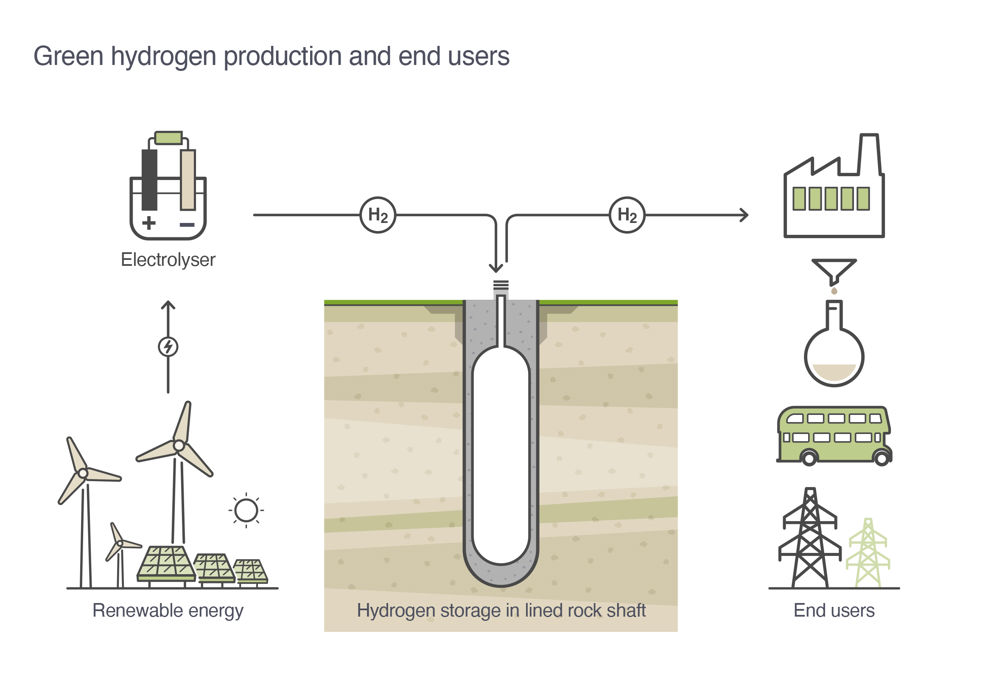Known as FlexiStore, the concept involves purpose-built, steel-lined shafts capable of holding up to 100 tonnes of compressed hydrogen at 220 bar - around 3.33GWh of energy, or enough to refuel over 1,000 HGVs, according to Gravitricity. Unlike naturally occurring underground storage like salt caverns, FlexiStores could be positioned anywhere, with the current plan to co-locate the storage as close as possible to renewable generation. Gravitricity says a single FlexiStore could serve a 460MW wind farm and that 1,000 units could meet the UK’s predicted hydrogen storage needs in 2050.
Related content
“If green hydrogen is to become a mass market fuel of the future then we need to find ways to store it safely and in large quantities close to where it is needed,” said Charlie Blair, managing director of Gravitricity.
“Purpose-built lined rock shafts will be the safest and most affordable way to store large volumes of hydrogen near to where it will be required. It is difficult to transport hydrogen. It therefore makes sense to locate hydrogen storage systems close to sources of renewable power – which can generate green hydrogen – and to potential users.”

Gravitricity has already conducted a £300,000 feasibility study on the FlexiStore concept with ARUP, funded through the UK government’s BEIS HySupply programme. The next step will see the development of a scale demonstrator to further validate the technology. Gravitricity has signed an MOU with VSL Systems UK for the design of this prototype, set to be built within the next two years.
“VSL is delighted to partner with Gravitricity to develop and deliver these pioneering ground engineering solutions for renewable energy generation and storage,” said Peter Hughes, managing director of VSL UK. “This project is fully aligned with the VSL vision to focus our engineering capabilities and solutions on the global transition to a low carbon future.”
In 2020, energy analytics firm LCP estimated that the UK’s wind power was curtailed on 75 per cent of days throughout the year, with over 3.6TWh essentially lost due to network constraints and lack of storage. With UK offshore wind set to grow from 11GW to 50GW by 2030, large-scale storage for this installed capacity is vital, and Gravitricity believes FlexiStore can be a core part of the solution.
“At present, the main proposals for storage are underground salt caverns and above ground storage,” said Blair. “Salt caverns offer scale, but very little flexibility – they only exist in certain locations; whilst above ground systems lack scale.
“We believe we have a ‘Goldilocks’ solution which can be delivered safely and affordably to meet the growing hydrogen economy’s needs.”











Taking steps toward reindustrialisation
Hi Jack, The UK and EU caused their own electricity price problems - for Russia was happy to supply UK after the Ukraine invasion, provided they paid...